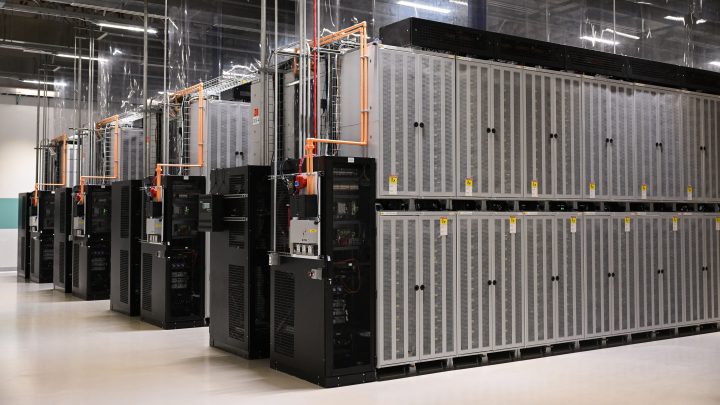
To put more renewable power to use, utilities are doubling down on battery storage
To put more renewable power to use, utilities are doubling down on battery storage

Two things are true: One, the use of renewable energy to generate electricity in this country is growing fast, especially solar. Renewables accounted for 22% of electricity generated last year, according to the U.S. Energy Information Administration. Two, the sun doesn’t always shine and the wind doesn’t always blow, which makes it hard to reliably use the electrons generated from those sources when they’re needed.
But over the past couple years, utilities have increasingly found a way to fix that: storage, in the form of batteries. A lot of them look like big metal boxes, arranged in rows like trailers or shipping containers.
The EIA expects utility battery storage to nearly double by the end of this year.
When wind and solar energy first started getting hooked into the electricity grid, you could balance the demand for electricity on a cloudy or still day by firing up a natural gas plant, said Severin Borenstein, a professor at University of California, Berkeley. But renewable energy usage has ramped up.
“We’re having a harder time just balancing the grid, using the natural gas power plants, ramping them up and down,” he said.
That’s where batteries come in, Borenstein said, who’s also on the board of California’s grid operator. They can hold extra renewable power for a few hours, then pump it out when it’s needed.
And utilities started using batteries a lot more in the last couple years because “battery costs have plummeted over the last decade,” he said.
So developers have realized there’s money in that storage, said Dennis Wamsted, an energy analyst at the Institute for Energy Economics and Financial Analysis. “Using relatively cheap energy saved from 2 o’clock in the afternoon, and then you can sell it into the market for a little more, you know, at 7 o’clock at night,” he said.
But even as the battery storage sector has grown rapidly, there are snags, said Vanessa Witte, an analyst at Wood Mackenzie. She lists supply chain issues, inflation and a long wait for what’s called the “interconnection queue.”
“Which is that queue where you need to put forth an application to actually get approved to connect your project to the grid,” she said.
Witte thinks some of those issues may be smoothed out in 2024. Michael Craig, an energy systems professor at the University of Michigan, is also encouraged by the sector’s progress and hopes it keeps going.
“We need an even greater pace in deployment and in scaling up technologies,” he said, to meet what he called the country’s aggressive carbon-cutting goals.
There’s a lot happening in the world. Through it all, Marketplace is here for you.
You rely on Marketplace to break down the world’s events and tell you how it affects you in a fact-based, approachable way. We rely on your financial support to keep making that possible.
Your donation today powers the independent journalism that you rely on. For just $5/month, you can help sustain Marketplace so we can keep reporting on the things that matter to you.

















